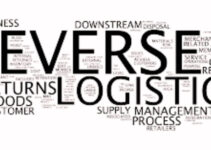Businesses and companies develop a comprehensive logistics strategy, and their focus is to streamline their e-commerce store operations. It offers you proven strategy and advice to successfully perform your supply chain operations and functions in a competitive landscape. Today, we’ll discuss strategic logistics management; its definition, key elements, best practices, and benefits.
What is Strategic Logistics Management?
Strategic logistics management develops a comprehensive plan for online stores and e-commerce businesses to deal with the movement of products and goods from suppliers to the end consumers. It comprises strategically collaborating and coordinating with various activities and processes like the following;
- Order fulfillment
- Transportation
- Warehousing
- Inventory management
- Procurement
The objective of strategic LM is to amplify and optimize various processes and activities to efficiently satisfy the needs and demands of customers while decreasing costs and improving performance. If you have set up a comprehensive logistics strategy, then it helps you in the following ways;
- Amplify customer satisfaction level
- Decreasing delivery time
- Increasing operational efficiency
- Gaining a competitive edge
Elements of SLM
Some of the main elements of strategic logistics management are as follows;
KPIs
KPIs play a significant role in measuring and analyzing the effectiveness of the logistical strategy. Some of the main logistics KPIs that would offer you key insight into operational performance are transportation cost, inventory turnover, on-time delivery, and order fulfillment rate. When you regularly analyze those metrics and indicators, it would help you to recognize the improvement areas, make adjustments, and amplify your logistical strategy.
Tech Integration
When you integrate technology into your logistical processes, then it amplifies efficiency significantly. Tech integration would help your business to efficiently scale your operations, decreasing manual errors, and improving accuracy. Companies employ the following technology to make data-driven decisions, real-time visibility, and automate various processes;
- Data analytical tools
- Transport management system
- Order management system
- Inventory management software
Transportation Strategy
A well-defined transport strategy plays a significant role in the timely and efficient delivery of orders. It comprises selecting the right transport channel, route optimization, and coordinating with logistics service providers. While developing the transport strategy, companies should keep in mind the environmental factors, reliability, cost, and delivery speed.
Warehouse Optimization
Warehouse optimization is significant for logistics efficiency. It comprises managing the following areas;
- Logistical automation
- Warehouse management system
- Leveraging technology
- Packing and picking processes
- Managing storage areas
Well-optimized warehousing system would help your business to decrease order processing time, improve operational efficiency, and decrease errors.
Supplier Management
Managing suppliers and vendors is also significant for the logistics strategy. It comprises of making sure a reliable supply of products, negotiating favorable items, and establishing strong relationships. However, when you closely collaborate with suppliers, it maintains product quality, decreases cost, and improves lead time.
Demand Forecasting
Demand forecasting is significant for effective and efficient logistics strategy. Companies could predict customer demand and plan inventory if they have an insight into the customer data, market trends, and historical records. It allows you to fulfill orders timely, decrease excessive inventory, and decrease stockouts.
Best Practices for SLM
The best practices for strategic logistics management are as follows;
Streamlining Goals
You should make sure that your company’s goals and objectives are aligned with the logistics strategy of the company. In order to set logistical goals and objectives, it is significant that you should comprehend your target customer market, competitive landscape, and needs and wishes of customers.
Data Analysis
You should employ various data analytical tools to have an insight into the supply chain operations of the company. Some of the main metrics and KPIs that would help you to make data-based decisions and recognize the improvement areas are as follows;
- Customer satisfaction
- Inventory turnover
- Transportation cost
- Order fulfillment rate
Collaboration
If you are working closely with suppliers, then stakeholders and logistics service providers would help you to develop a strong relationship with them. Better collaboration and effective communication would help you in the form of cost savings, better service levels, and improved coordination.
Investing in Technology
You should allocate a significant amount of resources to automation and other technology to optimize logistical processes. Some of the tech tools that would help you to improve efficiency and streamline various processes are as follows;
- Transportation management system
- Order management system
- Inventory management system
Continuous Improvement
It is significant to implement a culture of continuous improvement in your logistical processes. If you analyze and amplify various processes, then it would help you to recognize various issues, and launch an innovation strategy to gain a competitive edge.
Customer Experience
The focus of businesses and companies is to provide a great customer experience through the logistics process. It comprises of following processes;
- Flexible delivery option
- Responsive customer service
- Tracking accurately
- Speedy order fulfillment
Training and Development
It is significant to conduct training and development programs for the logistical team. It comprises of necessary knowledge and expertise to deal with complicated logistical issues, accept new technology, and keep up with the industry standards and practices.
Update and Review
Developing a logistics strategy is a continuous process and not a one-time thing. You should regularly update and review your logistical strategy relevant to customer demand, market dynamics, and business goals and objectives.
Benefits of SLM
Some of the main benefits of strategic LM are as follows;
Competitive Edge
Online stores and the e-commerce market have become highly competitive, and having a comprehensive logistics strategy would be a differentiating factor. Companies could offer superior inventory management, flexible shipping options, and speedy delivery service if they have optimized supply chain processes.
Scalability & Flexibility
Online stores and e-commerce businesses are growing exponentially, their scalability has become highly significant. The logistics strategy offers you a well-developed framework to manage growth relevant to the changing market conditions and demands. However, if you develop scalable logistical processes, then it would help your business to react to the changing market demands, expand your market, and amplify orders.
Customer Satisfaction
A logistical strategy would make sure that you have reliable customer service, speedy delivery time, and timely order fulfillment. If you are satisfying the customers’ expectations, then it would help you to earn customer trust and loyalty and gain a unique competitive edge.
Cost Optimization
The well-developed logistical strategy would help your business to recognize cost-efficient transportation routes, employ technology to automate processes, utilize warehousing space at an optimum level, and have low inventory holding costs. All of these factors collectively have a significant impact on saving costs.
Operational efficiency
Logistical strategy helps businesses and companies to streamline their operations by developing efficient workflows and processes. Companies could achieve efficiency and higher productivity by removing unnecessary steps, limiting hurdles, and optimizing the movement of goods.
Conclusion: Strategic Logistics Management
After an in-depth study of strategic logistic management; we have realized that logistics management strategy is significant for your business growth. If you are learning about strategic LM, then you should keep in mind the abovementioned elements, benefits, and best practices and strategies.
References
Ahsan is an accomplished researcher and has a deep insight in worldly life affairs. He goes Live 3 days a week on various social media platforms. Other than research writing, he’s a very interesting person.


